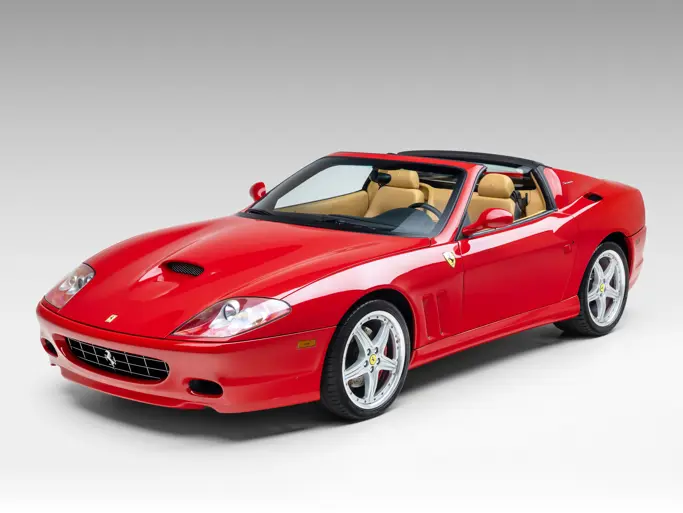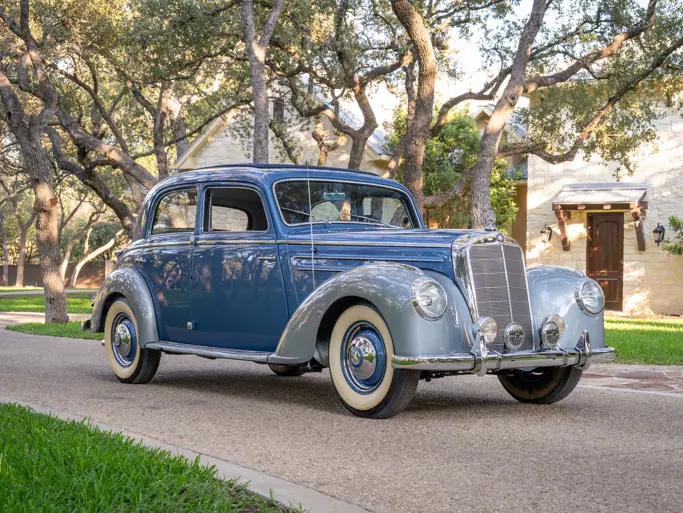 | Portola Valley, California
| Portola Valley, California
Weight: 32.2-tons (29,256-kg)
Length: 18' 6” (5.63-m)
Width: 8' 11” (2.71-m)
Height: 9' 11” (3.02-m)
Crew: 6 or 7
Armor:
Hull front: 2.0” (51-mm)
Turret front: 3.0” (76-mm)
Weapons:
-Primary
1x 75-mm Gun M2 or M3
1x 37-mm Gun M5 or M6
-Secondary
3 or 4x .30-cal M1919A4 Machine Guns
-Ammunition
65x 75-mm
128x 37-mm
4,084x .30-cal
Engine: General Motors 6046 12-cylinder diesel, 375-hp
Power/weight: 11.7-hp/ton
Fuel Capacity: 148-USG (560-l)
Range: 150-miles (241-km)
Speed: 25-mph (51-km/h)
The tank being offered, M3A5 Grant Medium Tank, serial number T374, British WD number, T-23877, was built in May 1942 by Baldwin Locomotive Works. It is the 374th Grant that Baldwin produced. It was shipped directly to Australia from the U.S. in the Summer of 1942 and most likely would have been kept in service with Australian reserve units until the early 1950s. Its sister tank, T373, WD number T-23876, is currently on display at the Puckapunyal Tank Museum in Australia. This vehicle has been cosmetically restored with fresh paint inside and out, the addition of new front fenders, serviceable tracks and roadwheels. It is currently non-operational. The interior has had various ammunition racks installed with inert/dummy 37-mm and 75-mm rounds added. A radio set has been installed in the turret. The driver's dashboard has had all instruments replaced. A N.O.S. “Little Joe” auxiliary generator has been installed in the hull. New fuel gauges for the twin GM diesels have been installed. N.O.S. periscopes for both the 37-mm and 75-mm guns have been installed. Pioneer tools and a machine gun tripod have been added to the hull exterior. Original World War II track clamps have been fitted to the hull of the tank. Deactivated main armament has been installed in the turret and hull. Various other crew equipment has also been included. The original, unrestored turret basket and exterior stowage bins will be provided with this tank. And finally, a spare GM 6046 power pack will also be included with this tank.
The M3 medium tank was based on the earlier M2 series of medium tank. The need for the M3 came about after quick studies of the Battle of France had shown that a gun heavier than the current 37-mm was required. Since a turret to house a 75-mm gun had not yet been designed, the M3 had a turret with the 37-mm. The 75-mm was housed in the right front of the hull. While providing heavier firepower, it was limited in traverse. While originally planned to be an interim vehicle while a new tank was developed, the M3 went into full-scale production in 1941.
To meet British needs, a new, larger turret for the 37-mm was designed. Unlike the American M3 which had the radio located in the hull, the British M3 had the radio located in the bustle of the new turret. This allowed for it to be closer and more accessible for the tank commander. To differentiate between the two types, the British named the American M3 the Lee and their M3, the Grant. The British Commonwealth received 2,887 Grants and Lees of various types during WW II. Production of the Lee/Grant ended in December 1942.
The Grant first saw action with the British 8th Army in North Africa during May 1942 at the Battle of Gazala. At the time of its introduction, the Grant finally provided the 8th Army with a tank that outgunned the majority of the tanks in service with the German Afrika Korps. Prior to the introduction of the Grant, the tanks of the 8th Army were equipped with the puny 2-pdr (40-mm) cannon or the U.S. manufactured 37-mm cannon. The 2-pdr lacked a high explosive (HE) round which was all so valuable in combating enemy anti-tank guns. Although the 37-mm gun did have a HE round, it was quite small and of limited effect. The lack of suitable HE rounds forced British tankers to have to rely on field artillery to knock out the guns or they would have to close to suicidal close ranges and attempt to engage the enemy guns with their tank-mounted machine guns. The Grant's 75-mm M2 and later 75-mm M3 gun with their powerful HE rounds, allowed the British to engage German anti-tank guns effectively from relatively safe ranges. The armor piercing capability of the heavier 75-mm round also allowed them to engage any of the German panzers with a good chance of success. Sadly for the British tankers, this technological advantage was nullified by the inferior tactics used by the 8th Army during this time. By the time British tactics were changed, the Grant was beginning to be replaced by the M4 Sherman series. As a gun tank, all Grants were replaced in 8th Army service by early 1943. Some were kept and used as command vehicles during the invasions of Sicily and Italy. With their main armament removed, the roomy hull of the Grant provided an ideal space for use by senior officers. Other Grants were shipped during the war to Australia and India. Those in India eventually saw service against the Japanese and served until the fall of Rangoon in Burma. Australia never deployed their Grants overseas and maintained them for home defense. They kept some of them in reserve service until 1955.
Transport Cost to Storage: $3,960





